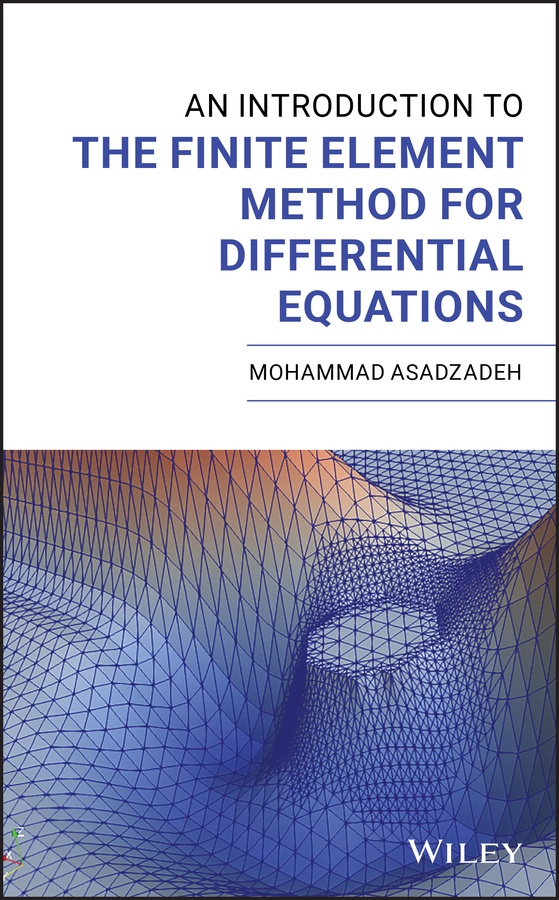
Table of Contents
List of Tables
- Chapter 8
List of Illustrations
- Chapter 1
- Chapter 2
- Chapter 3
- Chapter 5
- Chapter 6
- Chapter 7
- Chapter 8
- Chapter 9
Guide
Pages
An Introduction to the Finite Element Method for Differential Equations
M. Asadzadeh

This edition first published 2021.
2021 John Wiley & Sons, Inc.
All rights reserved. No part of this publication may be reproduced, stored in a retrieval system, or transmitted, in any form or by any means, electronic, mechanical, photocopying, recording or otherwise, except as permitted by law. Advice on how to obtain permission to reuse material from this title is available at http://www.wiley.com/go/permissions.
The right of Mohammed Asadzadeh to be identified as the author of this work has been asserted in accordance with law.
Registered Office
John Wiley & Sons, Inc., 111 River Street, Hoboken, NJ 07030, USA
Editorial Office
111 River Street, Hoboken, NJ 07030, USA
For details of our global editorial offices, customer services, and more information about Wiley products visit us at www.wiley.com.
Wiley also publishes its books in a variety of electronic formats and by printondemand. Some content that appears in standard print versions of this book may not be available in other formats.
Limit of Liability/Disclaimer of Warranty
While the publisher and authors have used their best efforts in preparing this work, they make no representations or warranties with respect to the accuracy or completeness of the contents of this work and specifically disclaim all warranties, including without limitation any implied warranties of merchantability or fitness for a particular purpose. No warranty may be created or extended by sales representatives, written sales materials or promotional statements for this work. The fact that an organization, website, or product is referred to in this work as a citation and/or potential source of further information does not mean that the publisher and authors endorse the information or services the organization, website, or product may provide or recommendations it may make. This work is sold with the understanding that the publisher is not engaged in rendering professional services. The advice and strategies contained herein may not be suitable for your situation. You should consult with a specialist where appropriate. Further, readers should be aware that websites listed in this work may have changed or disappeared between when this work was written and when it is read. Neither the publisher nor authors shall be liable for any loss of profit or any other commercial damages, including but not limited to special, incidental, consequential, or other damages.
Library of Congress CataloginginPublication Data
Names: Asadzadeh, M., author.
Title: An introduction to the finite element method for differential
equations / M. Asadzadeh.
Description: Hoboken, NJ : Wiley, [2020] | Includes bibliographical
references and index.
Identifiers: LCCN 2020008313 (print) | LCCN 2020008314 (ebook) | ISBN
9781119671640 (cloth) | ISBN 9781119671671 (adobe pdf) | ISBN
9781119671664 (epub)
Subjects: LCSH: Finite element method. | Differential equations.
Classification: LCC TA347.F5 A83 2020 (print) | LCC TA347.F5 (ebook) |
DDC 515/.35--dc23
LC record available at https://lccn.loc.gov/2020008313
LC ebook record available at https://lccn.loc.gov/2020008314
Cover Design: Wiley
Cover Image: Courtesy of: Mohammad Asadzadeh and Larisa Beilina
Preface
This book is an introduction to finite element methods (FEMs) used in the numerical solution of differential equations based on the piecewise polynomial approximations of the solutions. The presented material is accessible for upper undergraduates and starting graduate students in natural science and engineering. We mention three books for further and deeper study of FEM for differential equations.
Brenner, S.C. and Scott, L.R. The Mathematical Theory of Finite Element Methods. Springer, ed 3, 2017.
Ern, A. and Guermond, J.L. Theory and Practice of Finite Elements. Springer, 2004.
Larsson, S. and Thome, V. Partial Differential Equations with Numerical Methods. Springer, 2003.
The material is presented in three main theme.
(I) Basic theory: , contains introduction (and in some extend derivation) of basic ordinary and partial differential equations, their classifications, wellposedness (as the proof of Reisz and LaxMilgram Theorems) and formulation of the corresponding initial and initialboundary value problems. The concept of fundamental solutions using Green's functions approaches are discussed and necessary mathematical tools and environment are introduced in some details.
(II) Onespace dimensional problems: concern the polynomial approximations, polynomial interpolation, quadrature rules (numerical integration), iterative numerical methods to solve linear system of equations and finite element procedure for the onespace dimensional boundary value problems (BVPs), initial value problems (IVPs), and initial boundary value problems (IBVPs).
(III) Problems in higher ( ) dimensional cases. This part is the matter of and is devoted to the generalization/extension of the results of Part II to higher dimensions. The proofs in higher dimensions do not, in general, require any additional ideas. More specifically, we have introduced the higherdimensional interpolation procedure and study the stability and convergence aspects of certain finite element approximation for, higherdimensional, Poisson, heat, wave, and convectiondiffusion equations. The convergence analysis are given both in the a priori (exact solution dependent) and a posteriori (computed solution/residual dependent) settings.
) dimensional cases. This part is the matter of and is devoted to the generalization/extension of the results of Part II to higher dimensions. The proofs in higher dimensions do not, in general, require any additional ideas. More specifically, we have introduced the higherdimensional interpolation procedure and study the stability and convergence aspects of certain finite element approximation for, higherdimensional, Poisson, heat, wave, and convectiondiffusion equations. The convergence analysis are given both in the a priori (exact solution dependent) and a posteriori (computed solution/residual dependent) settings.
Whole or selected parts of the book is suitable as course material and for particular purposes. As outlined in table below, I have used some minor parts of ) and can be of interest for beginning graduates in applied math and engineering disciplines.
To conclude, the theory combined with approximation techniques and computer projects can give a better understanding of this useful tool (FEM) to solve differential equations. Finally, there are some easily implementable Matlab codes presented at the end of the book that are useful for freshmen in finite elements to test and check the theory through implementations.
Suggestions for possible course syllabus (what I have had)
| Chapters/Sections | 1 Semester | 78 wk | Credits |
| 1.11.4, 2.5, 2.6, 3, 57 | 3h/wk | 6h/wk | 5 |
| 1.11.4, 2.5, 2.6, 3, 510 | 4h/wk | 8h/wk | 7 |
| except 9.2, 9.3, 10.2.310.2.4, 10.5.410.5.6 |
| Whole material (includes Chapter ) | 6h/wk | 10 /wk /wk | 10 |
An intensive course for graduates in applied math/engineering.
All above configurations are associated with home and computer assignments. Examples of some assignments are given in Appendix C.
Next page

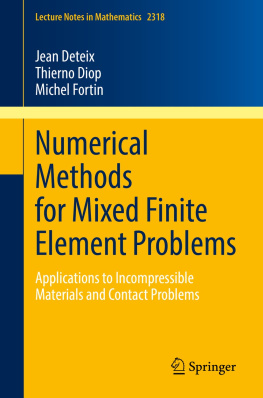
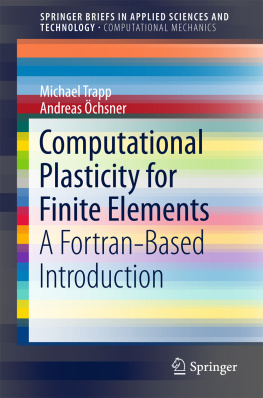
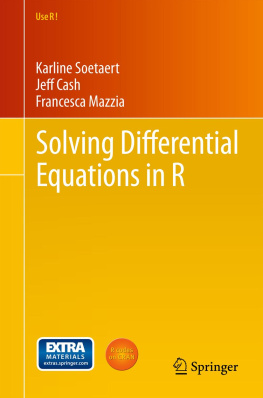
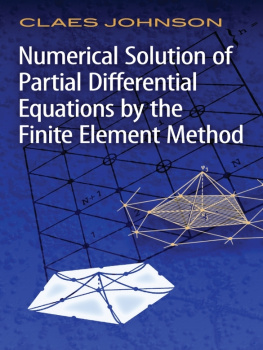
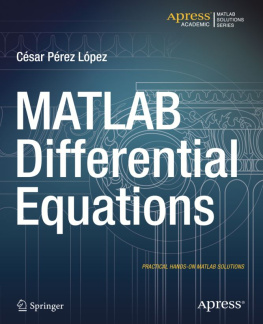
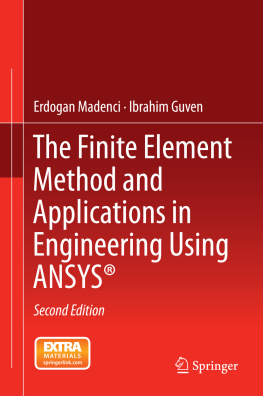
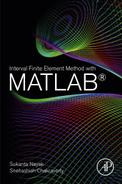

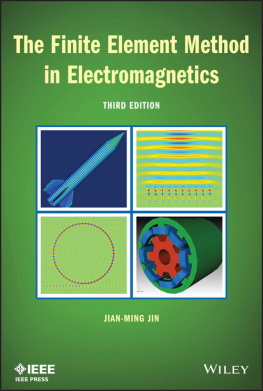


 ) dimensional cases. This part is the matter of and is devoted to the generalization/extension of the results of Part II to higher dimensions. The proofs in higher dimensions do not, in general, require any additional ideas. More specifically, we have introduced the higherdimensional interpolation procedure and study the stability and convergence aspects of certain finite element approximation for, higherdimensional, Poisson, heat, wave, and convectiondiffusion equations. The convergence analysis are given both in the a priori (exact solution dependent) and a posteriori (computed solution/residual dependent) settings.
) dimensional cases. This part is the matter of and is devoted to the generalization/extension of the results of Part II to higher dimensions. The proofs in higher dimensions do not, in general, require any additional ideas. More specifically, we have introduced the higherdimensional interpolation procedure and study the stability and convergence aspects of certain finite element approximation for, higherdimensional, Poisson, heat, wave, and convectiondiffusion equations. The convergence analysis are given both in the a priori (exact solution dependent) and a posteriori (computed solution/residual dependent) settings. /wk
/wk